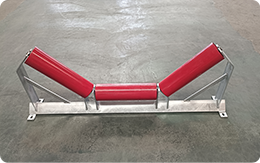 Afrikaans
Afrikaans  Albanian
Albanian  Amharic
Amharic  Arabic
Arabic  Armenian
Armenian  Azerbaijani
Azerbaijani  Basque
Basque  Belarusian
Belarusian  Bengali
Bengali  Bosnian
Bosnian  Bulgarian
Bulgarian  Catalan
Catalan  Cebuano
Cebuano  Corsican
Corsican  Croatian
Croatian  Czech
Czech  Danish
Danish  Dutch
Dutch  English
English  Esperanto
Esperanto  Estonian
Estonian  Finnish
Finnish  French
French  Frisian
Frisian  Galician
Galician  Georgian
Georgian  German
German  Greek
Greek  Gujarati
Gujarati  Haitian Creole
Haitian Creole  hausa
hausa  hawaiian
hawaiian  Hebrew
Hebrew  Hindi
Hindi  Miao
Miao  Hungarian
Hungarian  Icelandic
Icelandic  igbo
igbo  Indonesian
Indonesian  irish
irish  Italian
Italian  Japanese
Japanese  Javanese
Javanese  Kannada
Kannada  kazakh
kazakh  Khmer
Khmer  Rwandese
Rwandese  Korean
Korean  Kurdish
Kurdish  Kyrgyz
Kyrgyz  Lao
Lao  Latin
Latin  Latvian
Latvian  Lithuanian
Lithuanian  Luxembourgish
Luxembourgish  Macedonian
Macedonian  Malgashi
Malgashi  Malay
Malay  Malayalam
Malayalam  Maltese
Maltese  Maori
Maori  Marathi
Marathi  Mongolian
Mongolian  Myanmar
Myanmar  Nepali
Nepali  Norwegian
Norwegian  Norwegian
Norwegian  Occitan
Occitan  Pashto
Pashto  Persian
Persian  Polish
Polish  Portuguese
Portuguese  Punjabi
Punjabi  Romanian
Romanian  Russian
Russian  Samoan
Samoan  Scottish Gaelic
Scottish Gaelic  Serbian
Serbian  Sesotho
Sesotho  Shona
Shona  Sindhi
Sindhi  Sinhala
Sinhala  Slovak
Slovak  Slovenian
Slovenian  Somali
Somali  Spanish
Spanish  Sundanese
Sundanese  Swahili
Swahili  Swedish
Swedish  Tagalog
Tagalog  Tajik
Tajik  Tamil
Tamil  Tatar
Tatar  Telugu
Telugu  Thai
Thai  Turkish
Turkish  Turkmen
Turkmen  Ukrainian
Ukrainian  Urdu
Urdu  Uighur
Uighur  Uzbek
Uzbek  Vietnamese
Vietnamese  Welsh
Welsh  Bantu
Bantu  Yiddish
Yiddish  Yoruba
Yoruba  Zulu
Zulu Enhancing Conveyor Pulley Performance Through Effective Lagging Solutions and Techniques
Understanding Conveyor Pulley Lagging Importance and Benefits
Conveyor systems are fundamental components of many industries, facilitating the efficient transportation of materials over various distances. One critical aspect of these systems is the conveyor pulley, which plays a pivotal role in supporting the belt and transferring the drive force. To enhance the performance and longevity of conveyor pulleys, manufacturers often employ a process known as lagging.
What is Conveyor Pulley Lagging?
Conveyor pulley lagging refers to the process of applying a wear-resistant layer to the surface of the pulley. This layer, typically made from materials such as rubber or other durable composites, helps to improve the grip between the pulley and the conveyor belt. The primary function of lagging is to prevent slippage, which can lead to belt wear and reduced efficiency in material handling.
Importance of Conveyor Pulley Lagging
1. Enhanced Traction The primary benefit of lagging is the increased friction it provides between the pulley and the belt. This is particularly important in applications involving steep incline conveyors, where maintaining traction is critical to prevent the belt from slipping and ensure smooth operations.
2. Reduced Wear and Tear on the Belt An unlagged pulley can cause significant wear on the conveyor belt due to slippage and friction. By using lagging, the lifespan of the conveyor belt can be significantly extended, which in turn reduces maintenance costs and downtime.
3. Protection Against Environmental Factors Conveyor systems operate in various environments, often subjecting them to harsh conditions such as extreme temperatures, moisture, and abrasive materials. Lagging serves as a protective barrier, shielding the pulley from these adverse conditions and minimizing damage over time.
conveyor pulley lagging

4. Improved Operational Efficiency With enhanced traction and reduced wear, lagging contributes to the overall operational efficiency of conveyor systems. Efficient material handling reduces energy consumption and increases throughput, which is essential for businesses aiming to maximize productivity.
Types of Lagging Materials
Various materials can be used for pulley lagging, each with its own set of advantages. Rubber lagging is one of the most common choices due to its elasticity and resistance to wear. It provides excellent grip and can withstand heavy loads. Additionally, there are options like ceramic lagging that offer enhanced wear resistance, making them suitable for tougher applications.
Installation and Maintenance Considerations
Proper installation of conveyor pulley lagging is crucial for maximizing its benefits. It should be installed by professionals who understand the specific requirements of the system and the material being handled. Regular maintenance is also essential; although lagging can significantly reduce wear, it will still require periodic inspection and replacement to ensure optimal performance.
Conclusion
In summary, conveyor pulley lagging is an essential practice that enhances the performance and durability of conveyor systems. By improving traction, reducing wear, and protecting against environmental factors, lagging contributes to the efficiency and longevity of material handling operations. As industries continue to evolve, investing in quality lagging solutions will remain a cornerstone of effective conveyor system management, ultimately leading to increased profitability and operational success.
-
Revolutionizing Conveyor Reliability with Advanced Rubber Lagging PulleysNewsJul.22,2025
-
Powering Precision and Durability with Expert Manufacturers of Conveyor ComponentsNewsJul.22,2025
-
Optimizing Conveyor Systems with Advanced Conveyor AccessoriesNewsJul.22,2025
-
Maximize Conveyor Efficiency with Quality Conveyor Idler PulleysNewsJul.22,2025
-
Future-Proof Your Conveyor System with High-Performance Polyurethane RollerNewsJul.22,2025
-
Driving Efficiency Forward with Quality Idlers and RollersNewsJul.22,2025





























